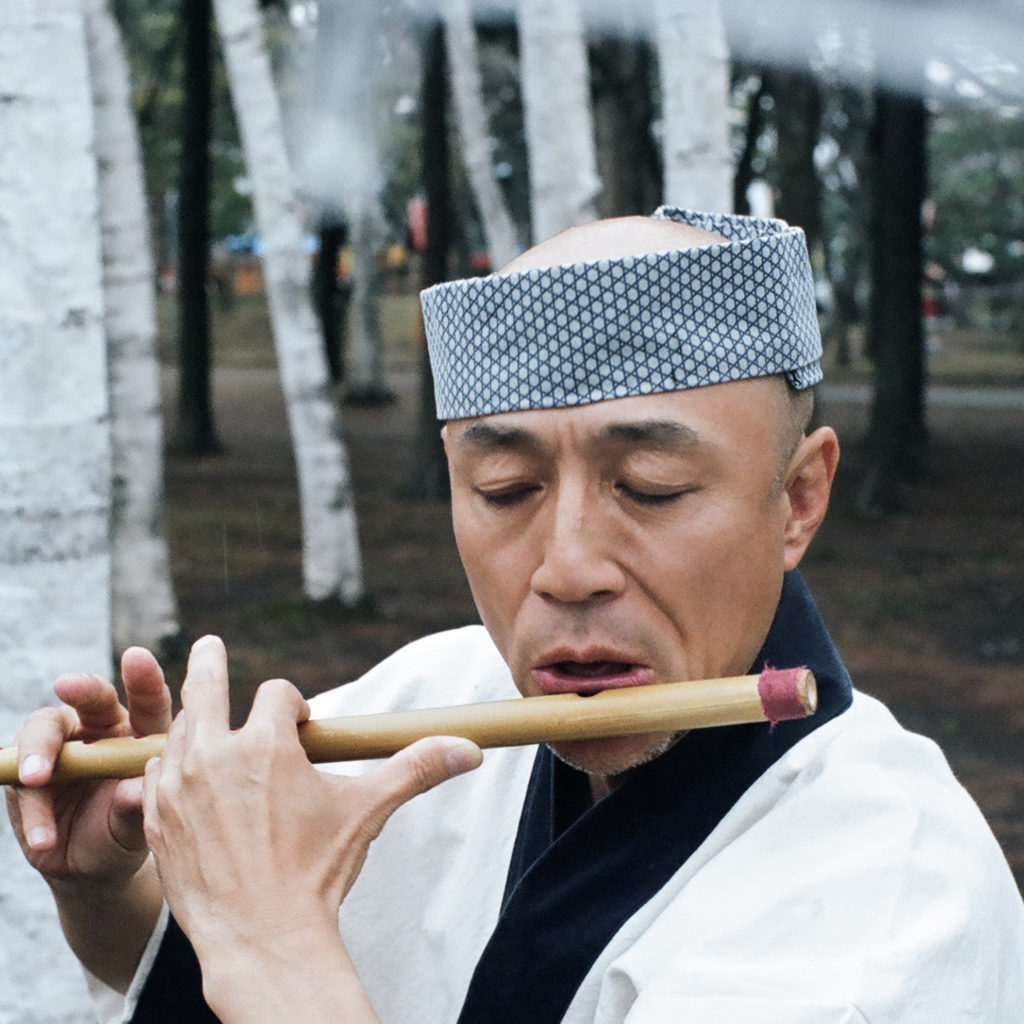Story 02 | 100 Sounds & Movements
It’s sundown on August 2nd, the first day of the Nebuta festival. Before we can see the first Nebuta coming towards us, we hear the dancing Hayashi, surrounding the float in their haneto costumes, chanting over the sound of taiko drums, flutes and cymbals, encouraging spectators to join in. The Nebuta might be the focus, but it’s the Hayashi teams, each with around 100 members, that create the festival atmosphere of frenzied excitement.
“The Hayashi are a big part of the Nebuta experience,” says Satoshi Kimura, an Aomori local who has been a Hayashi for 23 years. He plays a bamboo flute (“made from Aomori bamboo”) and cymbals, and is one of about 60 Hayashi in his group. Although two decades of practice seems like a long time, he is very modest about his position, “in terms of my career as a Hayashi, I’m still a beginner,” he says as he takes us to his weekly practice held inside Nebuta House, a new museum for Nebuta culture in Aomori.

Even through the winter, while the city is covered in heavy snow, different teams of Hayashi meet each week across the city to practice their performances. Team membership is greatly prized and different teams have become renowned for their unique take on the traditional dance. “I switched between a number of floats, but for the past ten years I’ve been with Asahi Beer,” he says, referring to his team by its sponsor.
“We never win, Hitachi always wins, because they do a good job of performing. They follow the rules but they never look excited.” For Kimura the purpose of dancing around the Nebuta is to create a sense of excitement. “Our team might be out of time when we play but I feel It’s our responsibility to make the people watching have fun. It’s not just about us sticking rigidly to tradition.” Kimura’s feelings are part of a larger concern about where the festival is headed. “In the old days the Nebuta were sponsored by local areas, not by brands,” Kimura becomes animated as he talks, this is something he is passionate about. “It used to be totally different. Now it’s too organised and caters too much to tourists. We want more people on the local level to be excited about it. We want more creativity and originality.”
Everyone’s old days tend to be of the “good old” variety, but in Kimura’s case his complaints about the current state of the festival seem more than just misplaced nostalgia. The identities of Nebuta and Aomori are closely linked, and those locals taking part in the festival fear it is losing some of its old magic. For Kimura, it’s about passion, he wants a return to the time when the festival was run for, and by, the people who lived and breathed Nebuta. “Me team is always very excited and exciting. We’re Nebuta baka (‘Nebuta crazy’). You can feel the energy just by looking at our faces when we perform.”
< PAPERSKY no.42(2013)>












